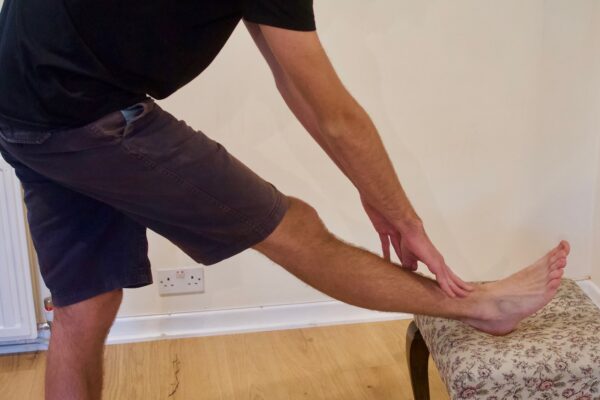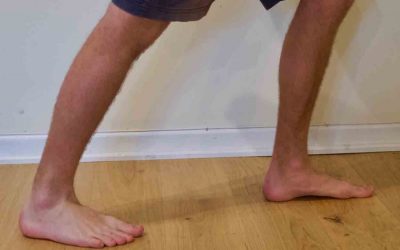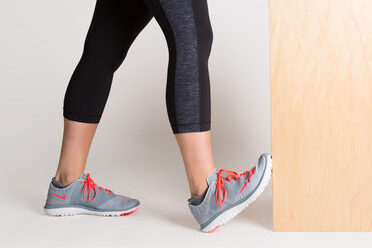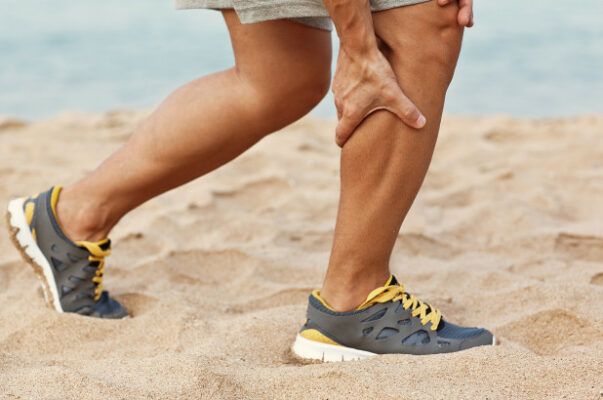Leg Cramps
These are a common problem especially in older ager.
Cramps most commonly affect the calves but can affect the feet and thighs.
They involve sudden, painful involuntary contractions of a leg muscle which often occurs while a person is sleeping or resting.
They can be gone in a few seconds, but the average duration is 9 minutes which can leave tenderness in the muscle for up to 24 hours after.
In most cases the reason for leg cramps is never found, and they are considered harmless. Sometimes, however, they may be linked to an underlying disorder, such as diabetes or peripheral arterial disease.
Other risk factors include dehydration, some medications, flat feet, and alcohol abuse.
In most cases, there is no underlying cause or reason why cramps occur.
It is common at night which may be caused by the way we sleep, with the feet stretched out and the calf muscles shortened, may trigger night cramps.
Exercise is another factor. Stressing or using a muscle for a long time may trigger a leg cramp during or after the exertion. Athletes often get cramps often affect especially at the start of a season if the body is out of condition.
Dehydration may also be a factor. Athletes who exercise strenuously in hot weather often experience cramps.
There are some medical conditions that may cause cramps are:
- Addisons Disease
- Excessive Alcohol
- Liver problems
- Diarrhoea
- Flatfeet
- Gastric bypass surgery
- Hypothyroidism, or an underactive thyroid
- kidney failure
- Hypolalamia
- Haemodialysis
- Diabetes
- Cancer treatment
- Muscle fatigue
- Vascular disease and venous insufficiency
- Motor neuron problems
- Parkinson’s Disease
- Peripheral artery disease (PAD)
- use of some medications
Cramps have been linked to electrolysis imbalances, but research has not proved these theories.
Older people are more likely to experience leg cramps. Muscle loss starts from the mid-40s and increases if the person is not active. This increases the risk of cramps.
Between 50-60% of adults are believed to experience cramps, and the likelihood increases with age.

What to do when you have a cramp?
1. Stop the activity you are doing
2. Stretch the muscle group affected
3. Massage the muscles
4. Hold the leg in the stretched position until the cramp stops
5. You can apply heat or ice to the muscle affected.
Some people swear by supplements, such as magnesium to reduce muscle cramps, but recent research concluded that older adults were unlikely to benefit from these.
There is some evidence that mild exercise just before bedtime, such as a few minutes on a stationary bike or treadmill, may help.
Treatment
No medication is recommended for cramps.
If a severe cramp leaves a muscle feeling tender, an over the counter (OTC) painkiller may help.
Quinine has been used in the past, but it is no longer recommended as it can lead to potentially dangerous interactions and side effects.
There is no evidence that non-steroidal anti-inflammatory drugs, calcium, or potassium are of any benefit.


Exercises and stretches
Stretching can help prevent future cramps and certainly helps while you have the cramp.
Calf cramp stretches
- Straighten the leg and pull the toes up toward the knee, to stretch the calf muscle.
- Calf Stretches-Stand about one meter from a wall with your feet flat on the ground. Lean forward against the wall with your arms outstretched and your hands flat on the wall. Keep the heels on the ground. Hold for 10 seconds, then gently return to an upright position. Repeat five to ten times.
- or place toes up on the skirting and lean forward
- Another method is to stand on the edge of the step and drop heels over the edge
- Calf and Achilles Stretches
Hamstring stretch
Put your leg up on a stool or chair. Lean forwards towards your foot. Hold than release. Do stretch slowly and never bounce.
Prevention
The following measures may also help prevent leg cramps.
- Supporting your toes when lying down or asleep by propping up the feet with a pillow or letting the feet hang over the edge of the bed.
- Keeping bedding loose to help prevent the feet and toes from pointing downward during sleep.
- Wearing suitable footwear, especially if you have flat feet and other foot problems.
- Keep fit by getting enough exercise making sure your program is suitable and that your progress is gradual. Avoid overexertion and training for prolonged periods, and always remember to warm up before you start.
Source medicalnewstoday

